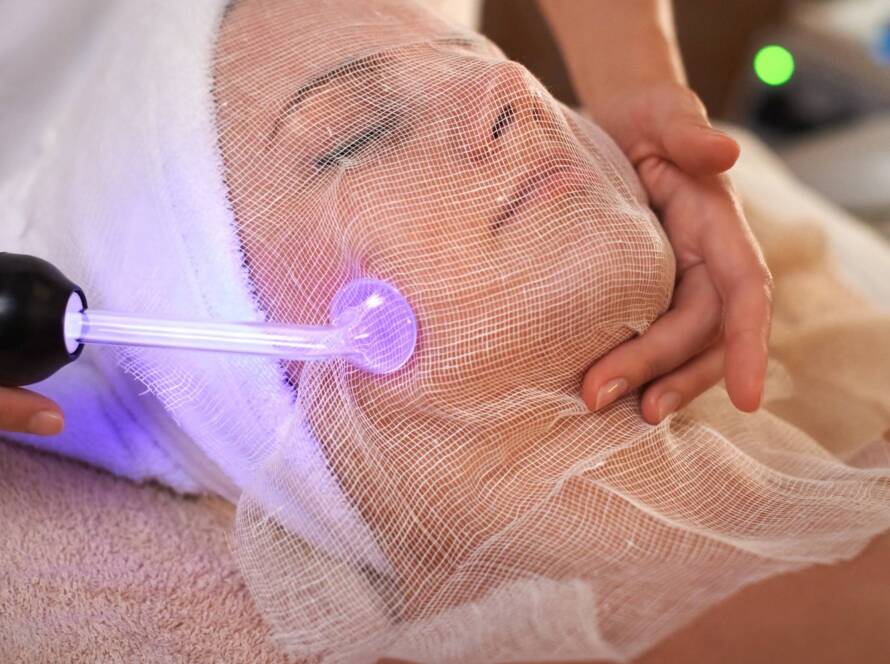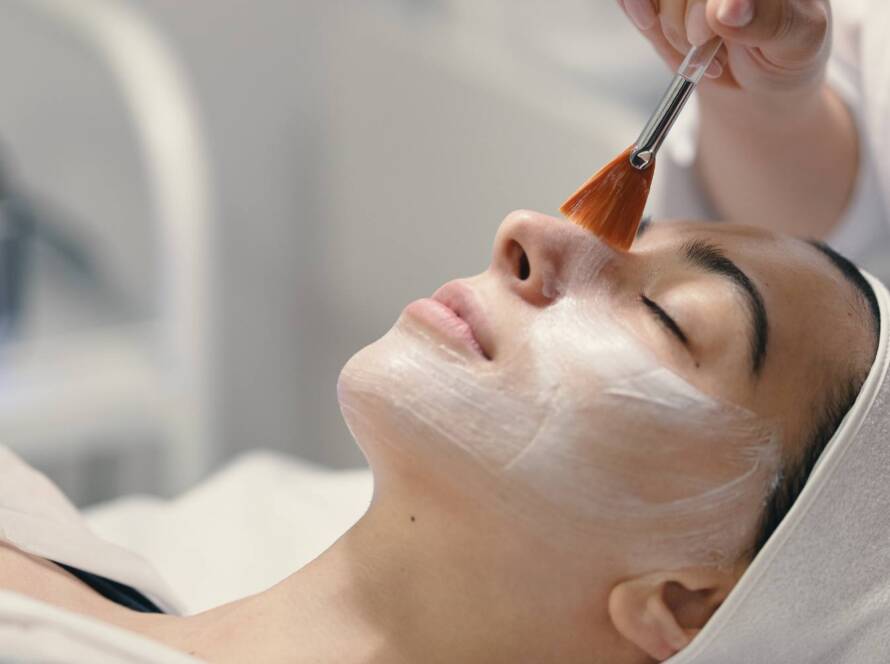Table of Contents
You’re tired of stubborn breakouts, oily shine, and the red marks that linger long after a pimple fades. It’s only natural to wonder, do facials help with acne enough to justify the time and cost? The short answer is yes—when you pick the right treatment, follow a solid after-care routine, and understand what facials can (and can’t) do for you. In this guide you’ll get a clear, no-nonsense look at the science behind acne facials, the different styles available, and how to fit them into your overall skin-care strategy.
How Acne Forms (and Why That Matters to Your Facial)
Before you book an appointment, it helps to know what you’re fighting. Acne happens when excess sebum, dead skin cells, and bacteria clog your pores. Hormones, stress, diet, and genetics all nudge the process along, creating blackheads, whiteheads, inflamed papules, or deep cysts. Facials target each stage of this cycle—lifting away debris, calming irritation, and boosting cell turnover—so you enjoy clearer, smoother skin faster.
What Exactly Is a Facial?
A professional facial is a multi-step, hands-on treatment delivered by a licensed esthetician or medical aesthetician. While every spa customizes its protocol, most acne-focused sessions include:
- Thorough cleansing to remove makeup, sweat, and surface grime.
- Skin analysis so your provider can tailor products to your current condition.
- Exfoliation—chemical, enzymatic, or physical—to unglue dead cells and free trapped oil.
- Extractions using sterile tools that safely lift out blackheads and whiteheads.
- Targeted masks or serums packed with ingredients like salicylic acid, sulfur, or niacinamide to quiet inflammation.
- Hydration and SPF to replenish moisture and shield fresh skin from UV damage.
The Most Effective Facials for Acne-Prone Skin
Not every facial is created equal. Below are popular options and how they tackle breakouts so you can choose the best match for your goals, budget, and comfort level.
1. Deep-Cleansing (Classic) Acne Facial
Great for beginners. You’ll get manual exfoliation, steam, and extractions to purge congested pores. Expect mild redness for a day and noticeably smoother texture within a week.
2. Chemical Peel
A controlled application of acids—often salicylic, glycolic, or lactic—dissolves the “glue” holding dead cells. Peels accelerate cell turnover, fade post-acne marks, and soften fine lines. Choose light peels every 4 weeks or medium peels every 2–3 months, depending on your provider’s advice.
3. Hydrafacial™
This device-powered treatment combines vacuum suction, gentle acid exfoliation, and a vortex-infusion of hydrating serums. It’s painless, zero-downtime, and ideal if you want clearer pores without harsh irritation.
4. LED Blue-Light Therapy
Blue wavelengths penetrate shallowly to kill C. acnes bacteria, while red light calms swelling and boosts healing. LED is usually tacked onto another facial step and is perfect for inflammatory pimples that hurt to touch.
5. Microdermabrasion
Using a diamond-tipped wand or micro-crystals, your esthetician buffs away the outermost layer of skin. It’s best for tackling blackheads, whiteheads, and uneven tone rather than active cysts.
6. Photo-Dynamic Therapy (PDT)
For severe or treatment-resistant acne, PDT activates a photosensitizing solution with light or laser energy, shrinking oil glands and slashing bacteria levels. Expect a few days of peeling and sun sensitivity.
How Facials Help With Acne—Step-by-Step
- Unclogging Pores – Exfoliation and extractions physically remove blockages so new sebum flows freely instead of backing up.
- Rebalancing Oil – Acid-based solutions regulate sebum production over time, so you produce just enough—not buckets.
- Killing Bacteria – Certain peels and LED therapy create an unwelcoming environment for acne-causing microbes.
- Calming Inflammation – Cooling masks, lymphatic massage, and anti-inflammatory serums dial down redness and soreness.
- Accelerating Healing – Increased circulation delivers nutrients that rebuild a healthy skin barrier and fade post-inflammatory hyperpigmentation.
The Limits: What Facials Can’t Do Alone
- Cure Hormonal Imbalances – If fluctuating hormones drive your breakouts, facials support skin health but won’t fix the root cause.
- Replace Prescription Treatments – Accutane ®, oral antibiotics, or topical retinoids may still be necessary for cystic acne.
- Work Overnight – You’ll notice a glow right away, but deeper changes require consistency—usually a series of 4–6 sessions.
Maximizing Results: Your Pre- and Post-Facial Game Plan
Before Your Appointment
- Pause aggressive actives such as retinoids or benzoyl peroxide 48 hours beforehand to avoid irritation.
- Arrive makeup-free to give your provider a true view of your skin.
- Share your full routine so conflicting products can be identified.
Aftercare Essentials
- Hands off – Resist the urge to touch newly extracted areas.
- Hydrate generously – Lightweight, non-comedogenic moisturizers prevent rebound oil production.
- Skip strenuous workouts for 24 hours; sweat can re-clog pores.
- Use broad-spectrum SPF 30+ daily—freshly exfoliated skin burns faster.
- Reintroduce actives gradually 2–3 days later to maintain progress without stinging.
When to See a Dermatologist Instead
You should book a medical consult if you notice:
- Deep, painful cysts that sit under the skin for weeks.
- Large areas of scarring or hyperpigmentation.
- Sudden, severe flare-ups tied to medication changes or hormonal shifts.
- Signs of infection (swelling, heat, or pus) after extractions.
Choosing the Right Professional
- Credentials matter: Look for licensed estheticians or medical aestheticians who specialize in acne.
- Hygiene counts: Tools must be sterilized, and disposable items discarded after each use.
- Customized plans: A reputable provider performs a skin analysis and builds a step-by-step roadmap, not a one-size-fits-all menu.
- Transparent pricing: Get an itemized quote so you’re not surprised by upgrades at checkout.
Cost, Frequency, and Return on Investment
Prices vary by region, clinic reputation, and facial complexity, but you can expect:
| Facial Type | Typical Cost (USD) | Recommended Frequency |
| Deep-Cleansing | $75 – $120 | Every 4 weeks |
| Chemical Peel | $100 – $250 | Every 4–6 weeks |
| Hydrafacial™ | $150 – $300 | Monthly |
| LED Add-On | $25 – $50 | Weekly or per facial |
| PDT | $300 – $600 | Series of 3–4, spaced 4 weeks apart |
Remember, consistency multiplies results. Many clinics offer packages that lower the per-session price, so ask about bundles if you’re committed to a treatment plan.
Ready to Put Your Best Face Forward?
Facials absolutely can help with acne—when you choose the right technique, commit to regular sessions, and pair treatments with a smart daily routine. Armed with the insights above, you’re ready to book confidently, ask informed questions, and walk out of the spa on the path to clearer, calmer skin. Your complexion won’t transform overnight, but with patience and professional guidance, you’ll soon see the breakout-free glow you’ve been chasing.




